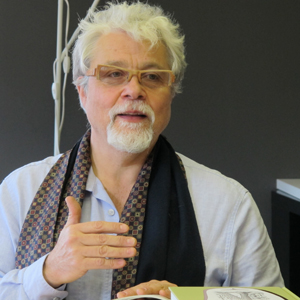
- Old Growth: Michael Nicholl Yahgulanaas
- Simply Read Books (2011)
Michael Nicoll Yahgulanaas coined the term "Haida manga" for his cartoon-like drawings that mix Haida myth and storytelling with a potent political critique of colonial oppression of his people. He's published a graphic novel in the style called Red, been exhibited at the Vancouver Art Gallery and many other venues, and is now rolling out Old Growth, a collection of work from 1970 to the early 2000s.
Yahgulanaas, who is 58 years old, dropped by the Tyee offices recently to walk us through his book and share in a discussion that included the power of popular art, the place where artist and politician merges, and the tension between the more insular creative life he leads now, years after he fought on the front lines for the Haida people's self-determination, including the infamous blockades of Lyell Island.
Grey-white wavy haired and bespectacled, Yahgulanaas explained that many of the drawings in Old Growth were never intended to be published to a wider audience. They were circulated amongst rural communities in and around Old Masset, the town in Haida Gwaii where Yahgulanaas spent his formative years, on and off the reserve. He spoke of creating an internal conversation through these drawings, distributed through village-printed newsletters, amongst those who were more alike than different and cultivating an understanding of each other. A collection of his cartoons communicating the issues at stake on the blockades, like cultural cooperation and the misuse of natural resources, as well as his personal narratives, Old Growth maintains a profound relevance to cultural and natural resource issues at stake today in B.C.
Yahgulanaas spoke with pride of the current "consensus decision-making" model being used on Haida Gwaii, believing it would create positive change if adopted in Indigenous reserve communities throughout Canada. Indeed, he suggested that the "current occupation of the House of Parliament" would be wise to use it for the governance of Canada as a whole.
However, the violence and exhaustion of political activism is not a way of life he wants to revisit. Rather, through art he now channels his energy and views on the state of our world. As he said, "I'm getting old and can talk on far longer than necessary. It's time to step aside and let the young people step in and get engaged."
Here's what else Yahgulanaas had to say...
On the Haida's fight for self-determination, beating government and big business:
"Up in Masset in Haida Gwaii, I think we had to throw over a lot more than, let's say, our Cowichan relatives had to. Just imagine if everyone else around the table disappeared and you were left to running this operation, you had to do it all. You would probably find at some point that you just simply abandon certain parts of the task because you just cannot do it anymore. If you're in a lifeboat and you've stepped off the cruise ship, you're not bringing the baby grand with you.
"And I'm not crying here, I'm not lamenting. I want to make the point that you can lose a huge number of your population and essentially damn near your language, a lot of control over your landscape and you can just about be snuffed out, and yet you can come back as we've seen and documented in this book [Old Growth].
"You can come back, you can beat the province, you can take on the largest corporate forces in B.C. at that time, and you can beat them. You're more than surviving. It's almost like you get tested, challenged, and you've thrown out everything that gets in the way and you're right down to bare bone and muscle. And you can win."
On whether the Haida should seek revenge for their losses:
"The question came up years ago, and we've talked about it at home. We've gone through the worst. We've taken the pestilence, the residential schools, the attack on every aspect of our lives, and we've survived. Did we go through that so that we could get even? Is this all in pursuit of retribution and revenge? Or, do we actually use it in a way so that we can elevate not only ourselves but the type of relationships between people?
"That is what has happened on Haida Gwaii. It's not perfect, but there is a real genuine effort to harmonize and see people as humans. That is not so common. And it certainly doesn't seem like it's going to be common under the present occupation of the House of Parliament."
On the Haida model of governance today, and why it's a gift to the world:
"As a result of this effort documented in the book, we have probably created one of the more progressive regions in Canada in terms of strong, collective, community-based harmony; an awareness of each other.
"The consensus decision-making approach is being applied to the Gwaii Haanas National Park Reserve and Haida Heritage Site. You have an archipelago management board -- half Canadians, half Haidas -- that is appointed by Haida government and the federal government, making decisions together based on consensus.
"That model on Haida Gwaii was selected by National Geographic magazine saying that area was the best-managed protected area in North America.
"There is enough argument out there to say that the model out of how we make the decisions on the landscape as being applied in Haida Gwaii is something worth looking at."
On why Northern Gateway should do business like the Haida:
"If we were using the Haida Gwaii model, there never would have been an Oka, a Gustafsen Lake. Those are shuffled to the side when you start to apply the kind of models that came out of the Haida Gwaii experience.
"I would say when we talk about Northern Gateway, rather than trying to strong-arm it through, with a goose-stepping kind of pitch behind it, why would we not explore a decision-making approach where communities actually have a right to make a decision at a table?"
On the powerful pull of politics, and why he left the violence behind:
"I was alive to experience the change in the production of art in my village. When I was a young man, there were two people I knew of in the village who produced art. It wasn't a huge activity going on. I was able to see a sudden explosion in the numbers of people producing art work.
"I started to participate in that a little bit in the '70s. And then I found politics, and it seemed to me that there was an obligation to participate in politics. There was a real call to arms; what was happening to the landscape was really terrible. Somebody had to do something about it and I had to be one of those somebodies.
"I thought a lot about how I was going to have some kind of conversation here, especially after the book launch, considering the nature of the book, and I really had to say to myself that I need to be careful. That I don't want to slide back into that political world outside of the art because it can be really brutal, and disrespectful and violent. I just don't want to get into that fight again. I think the art is a real good channel for that energy."
On whether art is cheapened or made more potent when infused with politics:
"By the time I had finished this part of my life, I started to see that I couldn't produce artwork without adding something to it. If you take a beautiful pole out of the village where it means these things and take it and place it way over there, does it mean the same thing? And I realized it doesn't mean the same thing.
"When art becomes in service of political and social contemporary issues, I think that's when it's really working well. That's what I was doing with (Old Growth). And, now, when I have an exhibit or produce work, I see that as an opportunity to produce material culture in service of other issues and not simply to be a new type of wallpaper."
On the need to serve our communities and make room for the kids to change the world:
"When I started this public service career, I felt and I still feel there's an obligation on everybody. It's almost like we should all be conscripted to serve in our community task force. I'm available and have conversations from time to time with people because I'm getting to be an old guy and I can talk on far longer than necessary, trying desperately to sound wise. But I'm over here now. You've got to get out of the way and create room for other people to step in. Younger people have got to step in and get engaged in it."
On why he won't bash Stephen Harper:
"The other thing that happens in that art practice is I try to keep the judgment out of it and really try not to fall into demonizing. It doesn't matter who is being demonized, it's still all in service of the same violence; we dehumanize someone. If I dehumanize the neo-conservatives and Stephen Harper, I may have sufficient justification to do it, but in the long run, it doesn't advance anything." ![]()
Read more: Indigenous



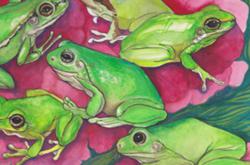

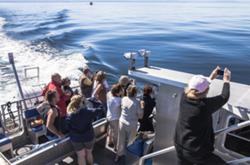
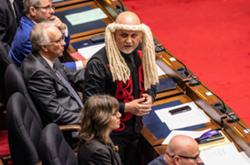
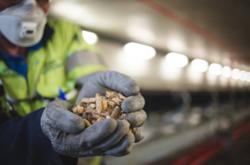
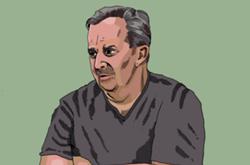
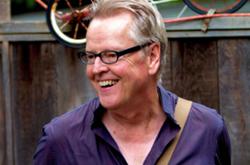
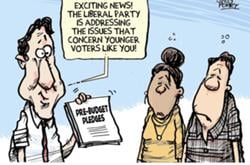




Tyee Commenting Guidelines
Comments that violate guidelines risk being deleted, and violations may result in a temporary or permanent user ban. Maintain the spirit of good conversation to stay in the discussion.
*Please note The Tyee is not a forum for spreading misinformation about COVID-19, denying its existence or minimizing its risk to public health.
Do:
Do not: